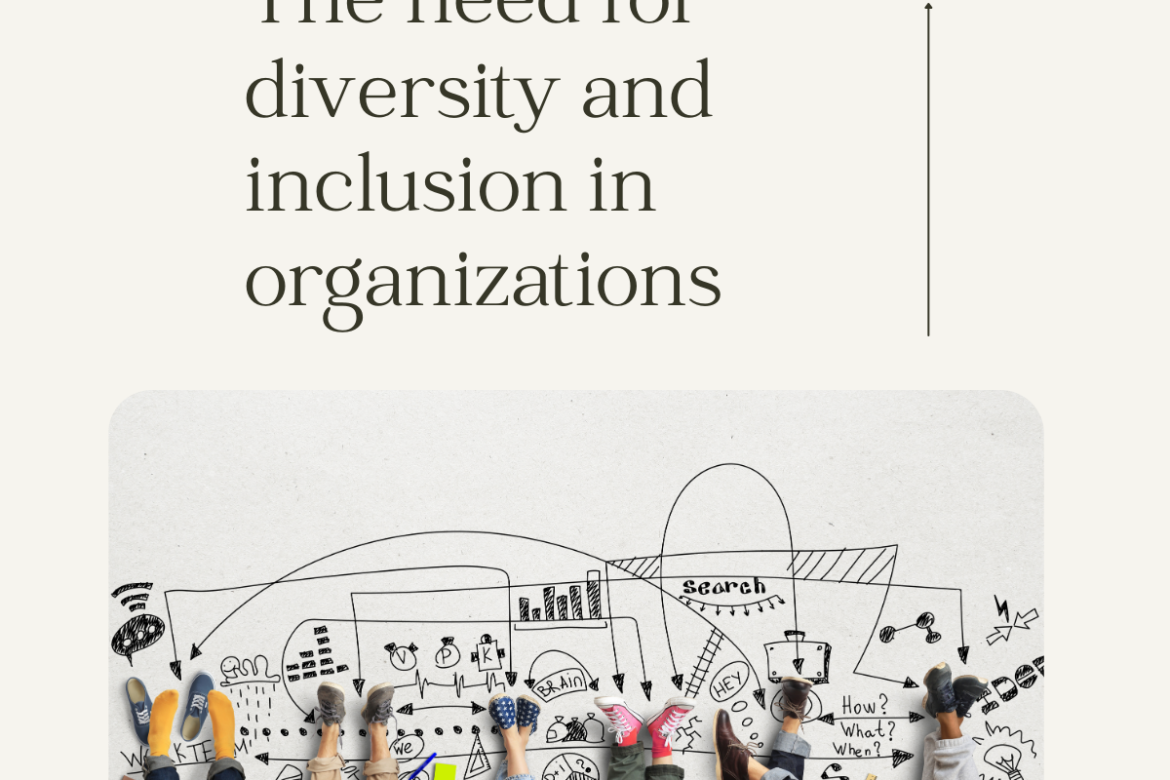What is diversity and inclusion
Diversity and inclusion in organizations are the values and practices that aim to create a workplace that
respects, supports, and celebrates the differences among people, and ensures that everyone has equal
access to opportunities and resources within the organization.
Diversity and inclusion in organizations are important because they can help to improve employee
engagement, performance, innovation, creativity, customer satisfaction, and social responsibility.
Research shows that diverse and inclusive organizations are more productive, creative, innovative, and
profitable than homogeneous organizations. Diversity and inclusion can also help organizations attract
and retain top talent, enhance their reputation and brand image, and meet the needs of diverse
customers and stakeholders.
Some of the strategies for promoting diversity and inclusion in organizations are:
Establish a clear vision and commitment to diversity and inclusion at all levels of the
organization, especially from senior leaders and managers.
Develop and implement policies and procedures that support diversity and inclusion, such as
anti-discrimination, anti-harassment, equal opportunity, flexible work arrangements, etc.
Provide training and education on diversity and inclusion for all employees, managers, and
leaders, to raise awareness, foster positive attitudes, and develop skills for working effectively in
diverse teams.
Create a culture of belonging and appreciation for diversity, where employees feel valued,
respected, and included, and where they can express their opinions, perspectives, and identities
without fear of judgment or retaliation.
The need for diversity hiring strategy:
Diversity hiring strategies are the methods and practices that aim to attract, recruit, and retain a diverse
pool of talent from various backgrounds, perspectives, and identities.
Diversity hiring strategies are important because they can help organizations to improve their
performance, innovation, creativity, customer satisfaction, and social responsibility by leveraging the
benefits of a diverse workforce. Diversity hiring strategies can also help organizations to reduce bias and
discrimination, enhance their reputation and brand image, and meet the needs of diverse customers
and stakeholders.
Some of the examples of diversity hiring strategies are:
- Conduct a diversity audit and set clear goals and metrics for diversity hiring, such as
representation, retention, engagement, satisfaction, etc. - Review and revise the job descriptions, advertisements, and application forms to ensure they
are inclusive, unbiased, and appealing to a diverse range of candidates. - Use various sources and channels to reach out to diverse talent pools, such as job boards, social
media, referrals, networking events, career fairs, etc. - Partner with diversity organizations, associations, groups, or communities that can help to
connect with diverse candidates and promote the organization’s diversity brand. - Train the hiring managers and interviewers on diversity awareness, cultural competence, and
unconscious bias prevention, and provide them with tools and guidelines for fair and consistent
hiring decisions. - Create a diverse hiring panel that reflects the diversity of the organization and the candidates,
and use structured interviews and assessments that focus on skills, competencies, and potential
rather than on demographics or personal characteristics. - Provide a positive and inclusive candidate experience throughout the hiring process, by
communicating clearly and respectfully, providing feedback and support, and showcasing the
organization’s diversity culture and values. - Implement effective onboarding and retention strategies for diverse hires, such as mentoring
programs, employee resource groups (ERGs), career development opportunities, recognition
and rewards systems, etc. - The need for diversity and inclusion in organizations is driven by various factors, such as ethical,
social, and business reasons.
The use of ERG in organizations:
An employee resource group (ERG) is a voluntary, employee-led group that fosters a diverse,
inclusive workplace aligned with the organization’s mission, values, goals, and business
practices. ERGs are usually formed by employees who share a common characteristic, such as
race, ethnicity, gender, sexual orientation, disability, religion, culture, etc., or a common
interest, such as professional development, community service, social networking, etc.
ERGs can provide various benefits for employees and organizations, such as:
- Providing support and mentorship for employees who may face challenges or barriers in the
workplace due to their identity or background - Enhancing career development and leadership opportunities for employees who may be
underrepresented or overlooked in the organization - Creating a culture of belonging and appreciation for diversity, where employees can express
their authentic selves and perspectives without fear of discrimination or retaliation - Increasing employee engagement, satisfaction, retention, and productivity by fostering a sense
of community and connection among employees - Improving innovation and creativity by leveraging the diverse skills and experiences of
employees and encouraging cross-functional collaboration and knowledge sharing - Strengthening customer service and loyalty by understanding and meeting the needs and
expectations of diverse customers and stakeholders - Enhancing the reputation and brand image of the organization by demonstrating its
commitment to diversity and inclusion and social responsibility.
The need for diversity and inclusion:
Ethically, diversity and inclusion are based on the principles of fairness, justice, and human
rights, which recognize that all people are equal and deserve respect and dignity regardless of
their differences. Diversity and inclusion also promote a culture of empathy, compassion, and
understanding among people, which can help to reduce prejudice, discrimination, and conflict.
• Socially, diversity and inclusion are important for creating a more inclusive and
representative society that reflects the diversity of the population and the customers.
Diversity and inclusion also foster a sense of belonging and acceptance among people,
which can enhance their well-being, happiness, and engagement. Diversity and inclusion
can also help to address social issues such as poverty, inequality, and injustice by
empowering marginalized groups and giving them a voice and opportunity.
• Business-wise, diversity and inclusion are essential for improving the performance,
innovation, creativity, and profitability of organizations. Diversity and inclusion can help
organizations to attract and retain a diverse pool of talent, leverage the skills and
perspectives of diverse teams, meet the needs and expectations of diverse customers
and stakeholders, enhance their reputation and brand image, and gain a competitive
edge in the market.
Next Innovation Asia


